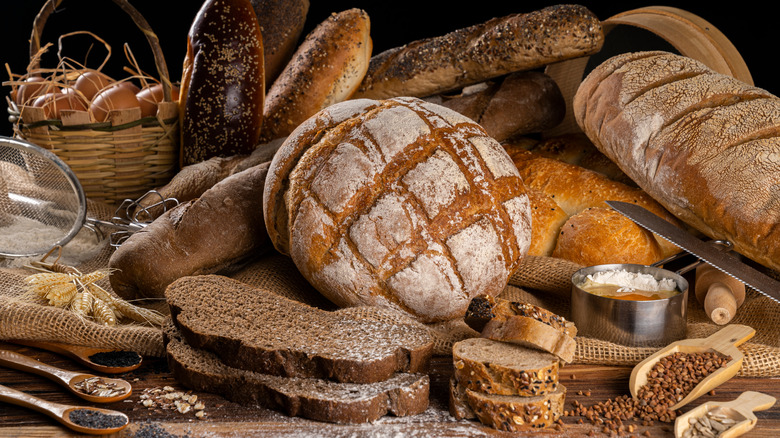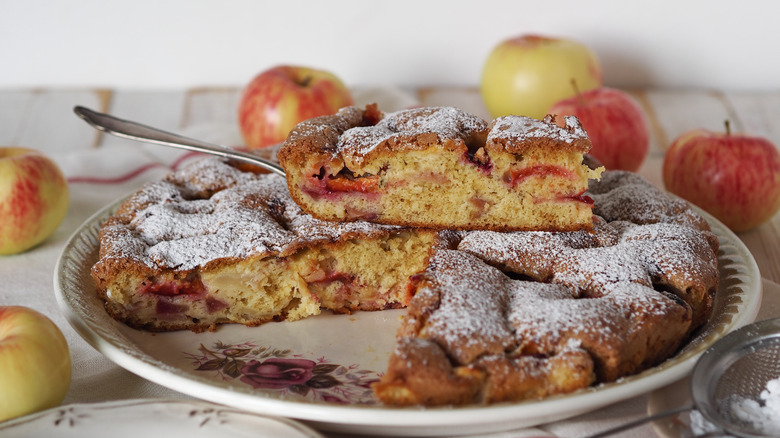This Tasty Dessert Is Made From Old Fruit And Stale Bread
While many think of cooking as a fancy pursuit — taking place within the confines of professional kitchens and utilizing pricy ingredients such as truffles, foie gras, and saffron — the truth is that cooks can be a scrappy bunch, creating delicious dishes from less-than-luxurious ingredients. According to the ancient Greek philosopher Plato, "Necessity is the mother of invention" (via Dictionary.com). This may be why many of the foods we love today were inspired by difficult circumstances during which high-on-the-hog ingredients were out of reach. Think, for example, of salt-rising bread, a kind of sourdough that 19th-century settlers in Appalachia came up with when they found their cupboards bare of yeast; or carrot cake, which rose to popularity during the Second World War, when sugar was scarce and the sweet root vegetable could be relied upon to create a dessert (per MSN).
When it comes to creating filling dishes without an additional (expensive) trip to the store, there's really no ingredient more versatile than bread: Think of how we use breadcrumbs to stretch out the meat in meatballs or meatloaf, or how cubes of stale bread can be tossed with tomatoes to create a panzanella salad, or mixed into an egg custard to make bread pudding. Stale bread actually makes an appearance in many dessert recipes — including the fruit Charlotte.
Stale bread and fruit save the day
Have you ever heard of a fruit Charlotte? According to MSN, this dessert was born in England and dates back to the 17th century, but became a favorite during the tough times of World War II. Made by lining a ring mold with thinly sliced bread and then adding a cooked fruit filling, Charlottes were a great way to use up stale bread as well as any fruit that was in abundance, from apples, to plums, to apricots, and were a way to get dessert on the table without having to buy special ingredients.
Today's recipes for fruit Charlottes are a bit more extravagant, typically calling for heavily buttered slices of bread, which, in the heat of the oven, will crisp up nicely and create a crust for the fruit purée inside the mold (via The Guardian). The dessert is often served in a pool of custard, or with a scoop of vanilla ice cream on top. Whether bare-bones or fancied up, it's a warming dessert with humble roots that has survived the test of time.

